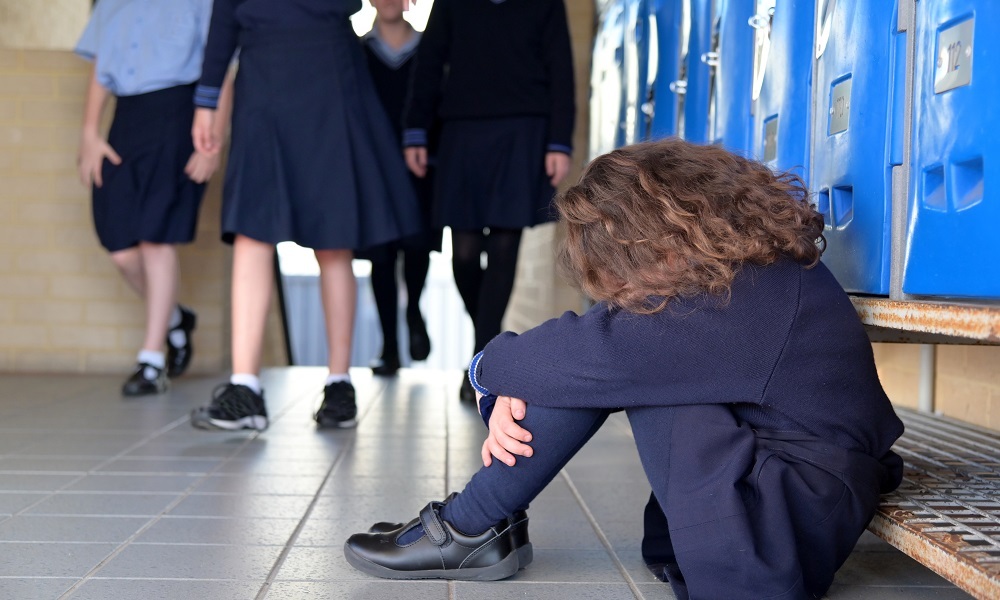This podcast from Teacher is supported by the Academy for Enterprising Girls Online Classroom - the one-stop-shop for teachers leading online entrepreneurial education.
Thanks for tuning in to this episode of Teacher Staffroom, where we catch you up on the latest evidence, insight, and action in education. I'm Zoe Kaskamanidis.
Student welfare has come sharply into focus over the past few years as the pandemic poses unprecedented challenges for students and teachers alike. There’s a lot to explore around student welfare in the Teacher archives, and in the lead up to R U OK?Day this month, we’re bringing you some recent examples.
In today’s episode I’m going to get you up to speed on these stories, and also some of my highlights from this month. And, like all episodes of Teacher Staffroom, I’ll be posing some questions throughout the podcast, so feel free to pause the audio as you go, gather some colleagues and discuss together how these stories might be relevant to your school context.
Before we jump into this episode, it would be great if you could take just a few moments to give a rating of our podcast if you’re listening to this audio on Apple podcasts or Spotify. If you’re listening on the Spotify app, just click on the three dots, then ‘rate show’, and if you’re on the Apple podcasts app you’ll find the rating section by scrolling to the bottom of our podcast channel page. On Apple podcasts, you’re also able to leave a short review for us. Leaving us a rating or a review helps more people like you to find our podcast, and is a really big support for our team.
Thanks for taking the time to support the work we’re doing. Let’s dive into this episode.
The first piece I’d like to share with you today is about consent education. In this month’s edition of Researching education, we looked at recent research on consent education from Australian researchers. The readings approach the topic from different angles – from respectful relationships education to sexual assault prevention, where consent education could fit into the curriculum, and how early it should be taught. A number of these articles also outline tools for teachers to improve practice in this area. You can link on the links in the article to read more.
So, let’s a moment here to reflect on your own school context. How is consent education taught at your school, what does it cover, and from what age are students taught about health and respectful relationships? Does this match up with what current research is suggesting?
My next highlight for this month also explores these questions around age and timing, but this time we’re looking at menstrual health education in Australian schools. I spoke with Dr Christina Curry, a senior lecturer at Western Sydney University and former Health and Physical Education teacher. Dr Curry is the lead author of an article recently published in the Curriculum Studies in Health and Physical Education journal, which looks at findings from a survey conducted from 2017 to 2018 with 4,202 participants between the ages of 13 and 25.
In this study, Dr Curry found that respondents felt their menstrual health education was overly focused on biology rather than pain management, were taught more about the cause and not the effect and when to seek medical help, and that menstrual health education came too little, too late, reaching students well after the beginning of puberty.
She also emphasised the importance of reducing stigma around period pain. She explained to me:
'If there’s a student who is experiencing pain, and can’t concentrate due to this pain, I think it is important that all teachers are aware that it is a health issue, and it has impacts. And this can easily be misinterpreted as not being engaged or not wanting to participate.'
Thinking about this research, as a teacher, reflect on your own knowledge and confidence supporting students in their menstrual health education. Are there gaps in your knowledge when it comes to menstrual health? What steps can you take to improve school culture and awareness around support for students experiencing period pain at school?
If you’d like to learn more about the findings of Dr Curry’s study, you can also take a look at an infographic we put together, which outlines a few key findings from her research.
Before we jump into our next story, here’s a quick message from our sponsor.
You’re listening to a podcast from Teacher magazine, supported by the Academy for Enterprising Girls Online Classroom. Developed by experienced STEM and Enterprise educators, the Academy makes it easy to deliver entrepreneurship education – in person or virtually. Aligned to the Australian Curriculum and funded by the Australian Government, Online Classroom offers primary and secondary teachers a full term’s worth of lesson plans ready to deliver. Transform your classroom and inspire the changemakers of tomorrow.
My next highlight takes us to the topical issue of vaping in schools. We share an infographic outlining some of the key findings from a study assessing the nature and consequences of student vaping (or e-cigarette use) in primary and secondary schools, through the perceptions of 196 school staff in Australia.
Three main changes in students resulting from vaping were identified in the responses from school staff who observed e-cigarette use in their school. These included a deterioration in mental wellbeing, social and peer interactions, and sporting performance. Despite this, only 35% of respondents reported having a policy in place at their school.
Staff perceptions of school approaches to vaping revealed three key areas in which respondents felt schools could improve, including more parental involvement in initiatives to curb student e-cigarette use, the offering of at-school counselling and support services for students who have vaping-related problems, and suspension of students using, selling or in possession of e-cigarettes. There’s a lot to explore in this study, so check out the infographic to find out more.
Let’s move on now to consider important initiatives to support the welfare of students experiencing vulnerability and disadvantage. I have two pieces to share with you on this topic. The first is a reader submission from Bridget Garing, classroom teacher at Pittwater House in New South Wales. In this article, she shares the details of a pilot undertaken by the school to encourage staff to work collaboratively to support students.
Garing references the growing recognition of the importance of wellbeing through the pandemic by students, parents and teachers, and highlights the role of teachers in supporting it by meeting individual needs. Here’s an excerpt from her article:
‘Ultimately, our job is to provide individualised support to the students in our classroom by meeting individual needs. Often, this means ideating solutions to the academic, behavioural, social and emotional problems they face. Given the diversity and complexity of student needs, it must not be left up to just one person in a school community to meet them. We must also ‘resist the quick fix’ when responding to the decrease in student wellbeing that the pandemic has catalysed …’
As part of a ‘Plan, Do, Study, Act’ cycle, Garing and the school’s Head of Wellbeing designed and launched a Needs Protocol from pilot through to launch, providing teachers with an opportunity to harness collaborative expertise for students of concern.
Let’s pause here to reflect on the school year so far. What challenges have your students faced, and how have you worked to support them? Did you enlist the advice and expertise of your colleagues?
Lastly, I want to share another article which highlights the importance of supporting disadvantaged students through the particular challenges the pandemic has presented.
We spoke with Associate Professor Wojtek Tomaszewski, Principal Research Fellow at the University of Queensland’s Institute for Social Science Research, and lead author of a study which investigated whether COVID-19 lockdowns impacted on lower-SES students’ attendance to a greater extent than on high-SES students’ attendance in Tasmania.
Associate Professor Tomaszewski and colleagues studied the attendance of 14,000 Year 10, 11 and 12 students from early June to the end of Term 2 in early July 2020, comparing these attendance rates with the corresponding periods in the years prior to COVID-19. The team found that the attendance rates of disadvantaged students dropped at a higher rate than high-SES students, to a greater extent compared to before the pandemic.
In terms of the implications of these findings for schools, he said:
'Students from different backgrounds have different needs and face different barriers. So it’s important to actually recognise that and our study actually shows that the effects are different. And based on this I think you can assume that disadvantaged students have different needs and face different barriers and might require more dedicated or tailored support.'
This brings me to a final question for you to reflect on. In your own school, can you track a different in the attendance rates of students from before school lockdowns to now? Which students’ attendance has been most significantly impacted, and what supports can you provide these students and their families?
That's all for this episode, and now you’re all caught up on the latest evidence, insight and action. Links to all the content and the resources I’ve mentioned will be in the transcript of this podcast available over at our website, teachermagazine.com.
Subscribe to our podcast channel on Spotify, Apple podcasts, SoundCloud, or wherever you get your podcasts from, so you can be notified of any new episodes as soon as they land. If you want to keep listening now, you can access the 200+ episodes already in our archive.
You’ve been listening to a podcast from Teacher, supported by the Academy for Enterprising Girls, a fun and exciting entrepreneurship program, available FREE to all young women in Australia aged 10-18.



